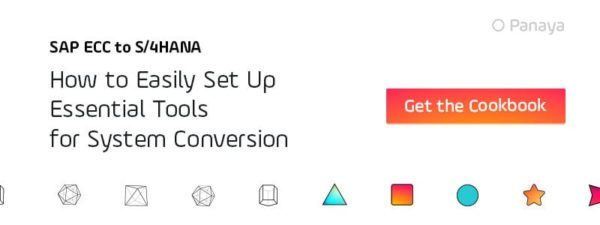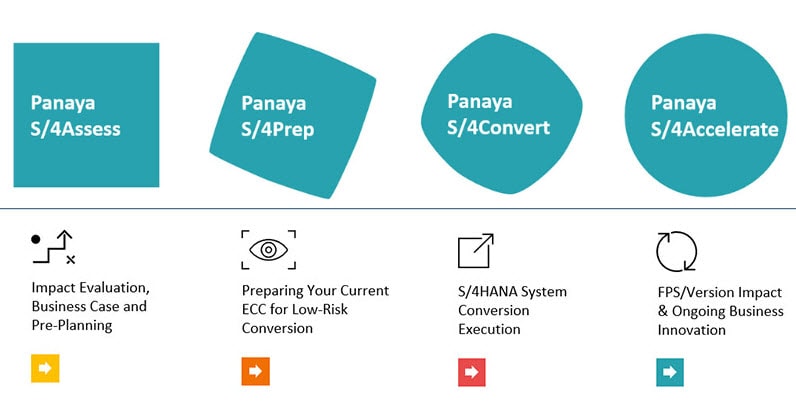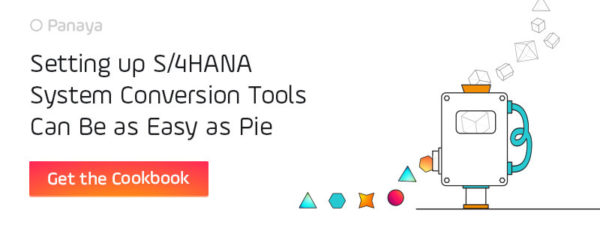Table of Content
SAP currently boasts 13,800 S/4HANA customers as it acknowledges SAP ECC (SAP ERP Central Component) users’ need for a more lenient timeframe and announces a change to its maintenance policy.
All Carrots. No Sticks.
New S/4HANA’s users such as FGC are already leveraging simplified ERP business processes, financial management and HR modules, as well as SAP Fiori® applications in-memory databases and real-time analytics. For the first time in four years, according to a 2020 DSAG investment report, investments in S/4HANA now exceed investments in Business Suite, marking a clear transition.
Still, for many, innovation alone is not a strong enough incentive to forgo all of their Business Suite 7 (BS7) investment and brave the complexity of a Greenfield migration.
In a bid to provide greater clarity and certainty to its S/4HANA-reluctant customer base, SAP has just announced the extension of mainstream maintenance for core applications of SAP BS7 (which includes ECC) until the end of 2027. At the same time, the company has also committed to maintain S/4HANA until 2040.

Innovation? Yes Please, but Not so Fast!
S/4HANA ‘State of the Market’ surveys held over the last year are inconclusive. According to a SAPinsider survey, over half (52%) of respondents are currently in the evaluation phase of their S/4HANA migration. According to a 2020 ASUG survey, adoption rates are even higher.
However a UK and Ireland SAP User Group research reveals that the majority (60%) of BS7 users do not plan to upgrade to S/4HANA in the next two years and 27 per cent will not budge for at least three years more. This means most organizations are planning a move from SAP ERP ECC to S/4HANA, but haven’t taken any concrete steps to get there.
According to an ASUG survey, most (56%) organizations are taking a wait-and-see approach. The main reason cited for their reluctance to move? The complexity of an SAP S/4HANA migration.
————
You might also like our blog
SAP S/4HANA Migration Guide
————
What SAP ECC Users Say
Americas’ SAP Users’ Group (ASUG) has been a vocal advocate of organizations’ need to have back-office core applications like SAP ECC catch up with the pace of innovation for front-office applications. Geoff Scott, ASUG’s CEO was quoted saying that ”[any] SAP customer who wants to grow and accelerate [their] business, remove inefficiencies, reduce technical debt, and take advantage of the latest capabilities of SAP software for [their] business… need to move to SAP S/4HANA”.
The UK and Ireland SAP User Group, on the other hand, maintains that “cost and change management” remain the “biggest reasons for organisations not to move to S/4HANA.” Paul Cooper, the User Group chairman was also recently quoted in “The Register” saying that “organizations still lack a clear business case.” He added that SAP’s recent EOL extension will allow businesses that invested in BS7 “more time to plan a potential move to S/4HANA.”
What’s Taking So long?
So what are the top impediments causing organizations to hold off on moving to S/4HANA:
- Organizations are yet to build a justifiable business case
- The migration is perceived as a technical upgrade – not a business opportunity
- A migration is deprioritized due to other IT priorities
- Organizations lack IT resources for the labor-intensive migration project
- Organizations lack confidence in the maturity of S/4HANA.
Who Is Moving From ECC to S/4HANA?
Organisations that see S/4HANA as an opportunity for business process transformation are the first ones to adopt it. Other characteristics of organizations that have started to make the move include:
- They tend to be early tech adopters who can make IT-led business cases.
- They’ve had to make a business case around external IT factors, such as a merger or acquisition.
- Or, they’ve needed to do a system refresh and see the move as an opportunity.
When Is the Right Time to Migrate From ECC to S/4HANA?
The right time to migrate is now. The earlier you migrate, the less risk you take. Here are three immediate steps you can take to tackle the most common S/4HANA migration obstacles today:
- Start building a viable business case well ahead of your move. This may sound obvious, but apparently, some organizations could use a reminder. Waiting until the last minute means you will have to pay the cost of indecision; technical debt, market share loss to competition and eventually, a rushed, insufficiently resourced migration project.
- Choose the right migration automation solution for a quality execution of your S/4HANA project. Look for solutions that minimize business disruption while moving your entire ERP system and business processes to the new S/4HANA platform.
- Avoid the most common risks of an S/4HANA migration. For example, understand the need to validate System Integrators (Sis) findings
————
You might also like our blog
Greenfield vs Brownfield Approach on Your Move to SAP S/4HANA
————
Go for a ‘Technical’ S/4HANA Migration First. Realize Innovation Later.
A detailed S/4HANA migration project assessment can help you minimize the conversion activities to the “must do” items. Once the migration to SAP S/4HANA has been completed, start innovating and changing business processes at your own pace to deliver on the S/4HANA digital transformation promise.
Panaya SAP S/4HANA Conversion Automation

Still Undecided? Keep Your ECC Current. Be Prepared.
Did you know? Some tasks vital to your migration can be addressed today. Start preparing your current ECC system with resources that are currently at your disposal and no need for S/4HANA expertise. With Panaya S/4Prep you will reduce S/4HANA migration costs by leveraging your current workforce.
Here are some of the actions you can already take with Panaya S/4Prep:
- Optimize your ECC system by purging unused code
- Move to HANA DB and upgrade to latest EHP version with a ready to execute project blueprint, including all corrections and testing activities
- Prioritize enhancement investments based on S/4HANA impact. Avoid investing in enhancements that will need to be redesigned when moving to S/4HANA
- Accurately evaluate budget with S/4HANA system conversion project corrections and testing activities effort estimations
- Understand which tests in your test catalog and business processes will be impacted by the move to S/4HANA
- Prepare your test catalog and business processes for the S/4HANA impact
- Replace impacted (deleted and obsolete) transactions in S/4HANA
- Gain critical insight into business processes that can be “lifted and shifted” as is
- Start designing new business processes based on predicted S/4HANA impact
By keeping your ERP current, you ensure faster ROI on S/4HANA.
Oh and by the way, there’s no need for a systems integrator’s evaluation. To get started, get Panaya S/4Assess,a comprehensive, all-in-one migration assessment analysis covering all corrections, testing activities and effort estimations towards an S/4HANA system conversion.

Frequently Asked Questions
Want To Learn More About Panaya?
- Check out our Resource Center
- Follow us on Linkedin, Twitter, YouTube and Facebook
